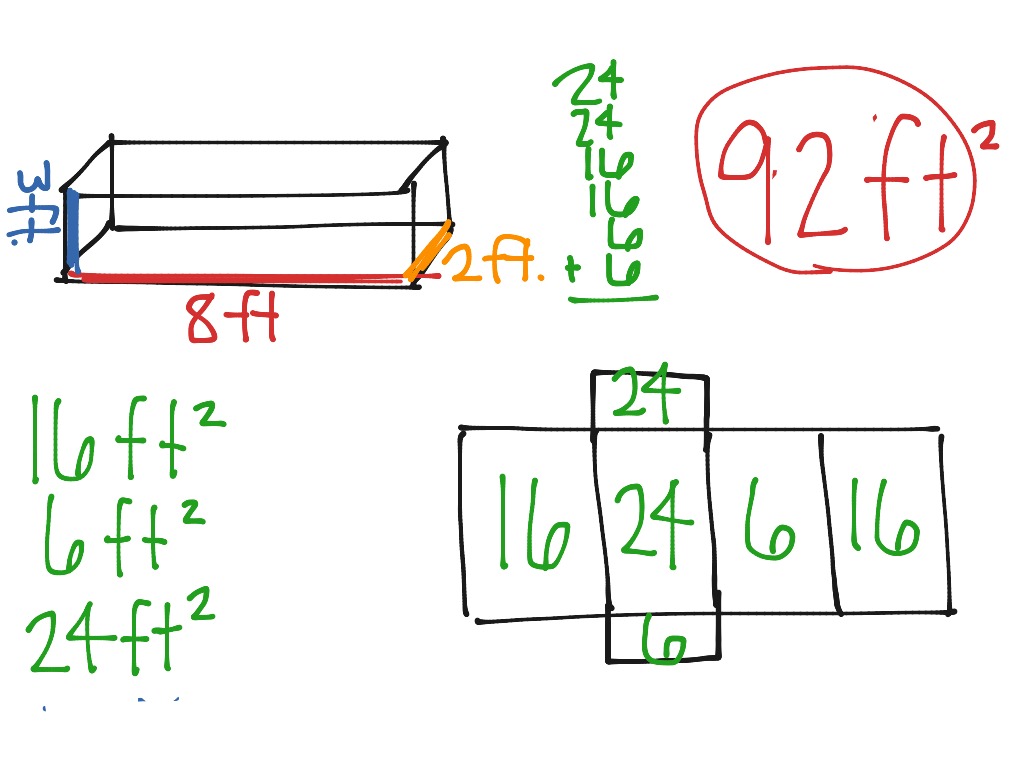

The steps to determine the base area of the prism, if the surface area of the prism is given, is: How Do You Find the Base Area of Prism If the Surface Area of Prism is Given? Write down the given dimensions of the respective prism. Step 1: Observe the pattern of the prism.We can find the surface area of the prism using the following steps: The surface area of a prism is given as S = (2 × Base Area) + (Base perimeter × height) where "S" is the surface area of the prism. The formula for the surface area of a prism is obtained by taking the sum of (twice the base area) and (the lateral surface area of the prism). What is the Formula for Surface Area of Prism? The unit of the surface area of the prism is expressed in m 2, cm 2, in 2, or ft 2. The surface area of the prism depends on the base area of the prism and the lateral surface area of the prism. The amount of area occupied by a prism is referred to as the surface area of a prism. Listed below are a few interesting topics that are related to the surface area of a prism.įAQs on Surface Area of Prism What is the Definition of the Surface Area of Prism? ∴ The surface area of prism is 132 square units. Thus, Surface Area of Prism = (2 × 12) + (18 × 6) Solution: As we know, the surface area of the prism is given as Step 3: The value of the surface area of the prism is obtained and the unit of the surface area of the prism is placed in the end (in terms of square units).Įxample: Find the surface area of a prism given above whose base area is 12 square units, the base perimeter is 18 units and the height of the prism is 6 units.Step 2: Substitute the dimensions in the surface area of prism formula (2 × Base Area) + (Base perimeter × height).Step 1: Note down the given dimensions of the prism.The steps to determine the surface area of the prism are:
#Surface area of a rectangular prism formula how to#
How to Calculate the Surface Area of Prism? On substituting the respective values in the formula we have, the surface area of a triangular prism = bh + (a + b + c)H =. Here the base is triangular so the base area A = ½ bh, and the base perimeter = the sum of three sides of the triangle let's say (a + b + c). Therefore, according to the surface area of the prism formula (2 × Base Area) + (Base perimeter × height). The given prism has two triangular bases. Let us calculate the surface area of the triangular prism given below with a base "b", the height of prism "h", and length "L".

Surface area of octagonal prism = 4a 2 (1 + √2) + 8aHĬheck out types of prisms to get more details about various prisms. Surface area of regular hexagonal prism = 6ah + 3√3a 2 Surface area of hexagonal prism = 6b(a + h) Surface area of pentagonal prism = 5ab + 5bh Surface area of trapezoidal prism = h (b + d) + l (a + b + c + d) Surface area of rectangular prism = 2(lb + bh + lh) Surface area of square prism = 2a 2 + 4ah Surface area of triangular prism = bh + (s1 + s2 + b)H Surface Area of Prism = (2 × Base Area) + (Base perimeter × height) See the table below to understand this concept behind the surface area of various prism: Shape The bases of different types of prisms are different so are the formulas to determine the surface area of the prism. The total surface area of a Prism = Lateral surface area of prism + area of the two bases = (2 × Base Area) + Lateral surface area or (2 × Base Area) + (Base perimeter × height). Thus, the lateral surface area of prism = base perimeter × height The lateral area is the area of the vertical faces, in case a prism has its bases facing up and down. Let us look at the surface area of the prism formula The total surface area of a prism is the sum of lateral surface area and area of two flat bases. To find the surface area of any kind of prism we use the general formula. Finding the surface area of a prism means calculating the total space occupied by all the faces of that respective type of prism or the sum of the areas of all faces (or surfaces) in a 3D plane.

The surface area of a prism refers to the amount of total space occupied by the flat faces of the prism.


 0 kommentar(er)
0 kommentar(er)
